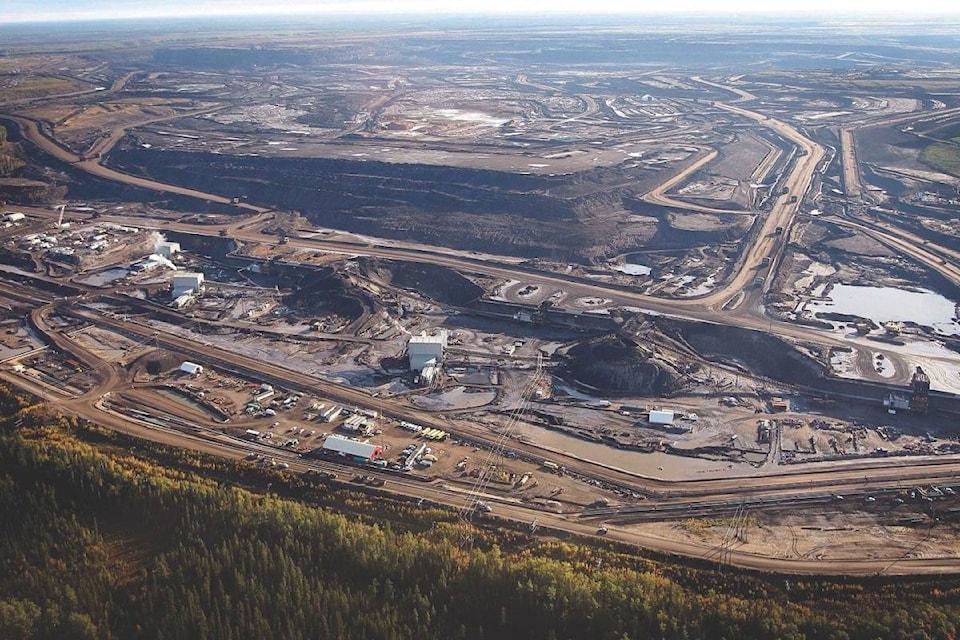The recent announcement that Teck Resources Ltd. is pulling its application for a controversial new oil-sands mine in Alberta started a flurry of accusations with many seeing the issue as jobs versus climate.
Beyond the climate-change debate, the economics of the project have changed since it was first proposed in 2011 when crude prices often topped $100 a barrel and there were concerns that the world was running out of oil. Canada’s oil sands (in particular those of Alberta) which contain the world’s third-largest reserves, saw lot of spending as companies and countries rushed to secure supplies.
A major reason for the Teck withdraw is recent oil prices of $52 a barrel due in large part to fracking techniques used to unlocked massive reserves in Texas’s Permian Basin. The mine was projected to produced about 260,000 barrels of crude a day but would also have emitted the equivalent of about 4.1 million tons of carbon-dioxide a year, making it difficult for Canada to meet its greenhouse-gas reduction targets.
READ MORE: Public input should iclude more categories than just old growth
A review of the pros and cons may help clarify the debate. As stated above most of the pros deal with jobs and helping keep low oil prices. Even two of the pros may be of some concern i.e. enormous growth potential (less than five percent has been developed) and a 95 percent increase would mean an equivalent increase in some of the pollution concerns. The minimizing of GHG as being “potentially” doable is a concern when there are an estimated four million tons of CO2 produced a year. The other pros are ones we have heard of before .i.e. large supply (third largest in the world) which is economically recoverable at today’s oil prices. The cons are numerous with the oil sands are already being Canada’s largest source of CO2 emissions. Typically, tar sands are strip-mined and the bitumen cooked out of two tons of sand for each barrel of oil, making the greenhouse gas and energy footprints of tar sands oil far larger than that of conventional oil. The amount of oil produced relative to the energy consumed is between three to one and five to one, making tar sands an exceptionally high-cost and low-net-energy oil. Conventional oil was over 20 to one.
Alberta, with only 10 per cent of the population, emits the most GHG emissions of any province. Provincial government has been slow to respond. Large amounts of water are required: roughly three to one which has resulted water pollution approximately three million gallons of toxic runoff per day resulting in fifty square miles now covered in toxic pools.
The mining is also destructive to major boreal forest which is an important carbon sink along with widespread habitat destruction, both on land and water. Ancestral lands have been destroyed as well as expensive and risky pipeline is needed to reach faraway markets. Even with the cancellation of the massive Teck project existing production rates will replace many hectares of boreal forests with toxic ponds.
The Parkland Institute, reported that the government has received less than 20 per cent of the wealth generated by oil sands production since 1997 even though its original target was 35 per cent. According to the report Albertans have received an average of nine percent since 1997.
READ MORE: Building soil health through biodiversity
Global reported earlier this week the Alberta government had been slow at producing an alarming climate report. The provincial Ministry of Environment and Alberta Federation of Labour (AFOL) had requested the report produced months ago. Gill McGowan, president of the AFOL said: “this approach could affect hundreds of thousands of people who could lose their jobs and their retirement savings. If they take money from the public sector, from the public purse and use it to prop up oil and gas projects that have been rejected by global investors, that’s money that’s being taken away from education, health care, infrastructure, all those things that are already being underfunded. This is a recipe, from our perspective in the labour movement, for economic disaster.”
Jim Hilton is a professional agrologist and forester who has lived and worked in the Cariboo Chilcotin for the past 40 years. Now retired, Hilton still volunteers his skills with local community forests organizations.
Do you have a comment about this story? email:
editor@wltribune.com
Like us on Facebook and follow us on Twitter.
